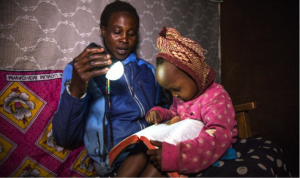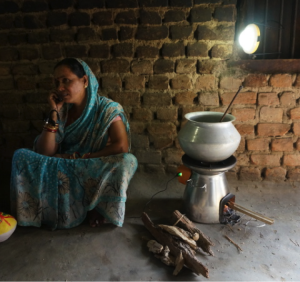
While it may not have always made the headlines, there were a variety of announcements and programs launched in New York last week. We’ve hand-selected several initiatives that signify the increasingly important role of public-private partnerships and technology in advancing global development.
Scaling Up Innovation to Achieve the MDGs 
During the 69th Session of the UN General Assembly, the wide-ranging debate about setting the next round of MDGs was front and center. But we’ve still got 15 months to go – and much to achieve – before the original MDGs end in December 2015.
Enter the MDG Countdown2014, hosted by USAID and the UK’s Department for International Development (DFID) to “showcase the continued commitment of USAID and DFID to the MDGs,” energize support for achieving the goals, and demonstrate “the game-changing role innovation plays in reaching them.”
Case and point: the Global Innovation Fund. Launched by USAID, in partnership with DFID, the Swedish and Australian governments, and Omidyar Network during the Countdown event, this new, non-profit innovation fund takes the model of USAID’s Development Innovation Ventures to a global scale.
It also represents a “historic commitment by five of the most dynamic leaders in global development,” announced USAID Administrator Raj Shah, “to invest in cutting-edge solutions to the world’s most pressing challenges.”
Through grants and risk capital, the Fund will target and collaborate with organizations, businesses, and researchers using new technologies to generate electricity from cookstoves, expand access to safe drinking water, advance education with mobile phones, and much much more – the kind of ideas you could see up close at the event’s “Innovations Marketplace.”
Partnering to Defend Democracy
 In an effort to halt the global crackdown on civil society, President Obama convened a High Level Event on Supporting Civil Society with heads of state, representatives of civil society, and multilateral organizations. Two days later, during the Clinton Global Initiative, he announced the United States is doubling down on a previous commitment to combat this “campaign to undermine the very idea of democracy.”
In an effort to halt the global crackdown on civil society, President Obama convened a High Level Event on Supporting Civil Society with heads of state, representatives of civil society, and multilateral organizations. Two days later, during the Clinton Global Initiative, he announced the United States is doubling down on a previous commitment to combat this “campaign to undermine the very idea of democracy.”
How? Over the coming year, the U.S. will bolster diplomacy to combat laws that restrict civil societies through expanded support and funding for the Community of Democracies.
Since this is a truly global problem, the United States will also work in partnership with the Swedish government and the Aga Khan Development Network to launch a series of Innovation Centers designed to strengthen civil society organizations, not only “fostering democracy, [but also] achieving sustainable development that reduces poverty, particularly amongst the most vulnerable communities.”
And because “this is part of American leadership,” overall, and “not just a matter of the State Department, or USAID,” President Obama also issued a Memorandum making it the policy of more federal departments and agencies to consult and work with civil society groups.
Whether it’s protecting democracy through civil society or achieving the MDGs before the clock runs out, these two signify a “new model of development” that is based on innovative thinking and partnerships – and demonstrates how the U.S. leadership is helping build a better, safer world.